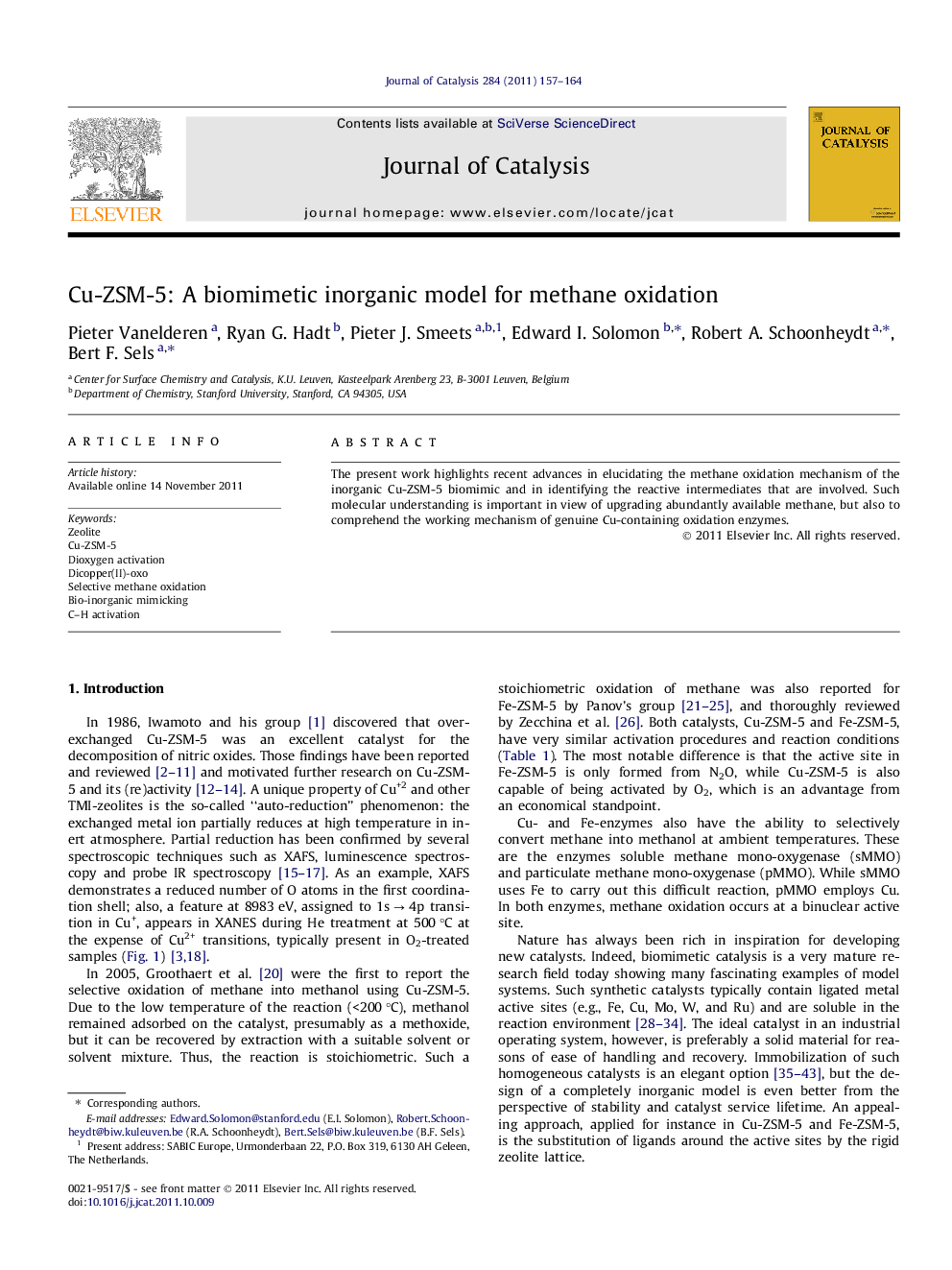| Article ID | Journal | Published Year | Pages | File Type |
|---|---|---|---|---|
| 61559 | Journal of Catalysis | 2011 | 8 Pages |
The present work highlights recent advances in elucidating the methane oxidation mechanism of the inorganic Cu-ZSM-5 biomimic and in identifying the reactive intermediates that are involved. Such molecular understanding is important in view of upgrading abundantly available methane, but also to comprehend the working mechanism of genuine Cu-containing oxidation enzymes.
Graphical abstractThe present work highlights recent advances in elucidating the methane oxidation mechanism of the inorganic Cu-ZSM-5 biomimic and in identifying the reactive intermediates that are involved. Such understanding is important in view of upgrading abundantly available methane, but also to comprehend the working mechanism of genuine Cu-containing oxidation enzymes.Figure optionsDownload full-size imageDownload high-quality image (39 K)Download as PowerPoint slideHighlights► Cu-ZSM-5 selectively oxidizes methane to methanol. ► The active site is a mono-μ-oxo bridged dicopper core. ► Dioxygen activation involves a μ-(η2:η2) peroxo dicopper(II) species. ► While approaching the transition state of the reaction, the active site polarizes to a CuII-oxyl. ► The findings contribute to elucidating the working mechanism of methane-oxidizing Cu-enzymes.
